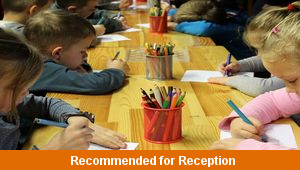Lesson Five – The Shepherds

This religious education teaching pack for the Foundation Stage gets the children to select and record a selection of special gift ideas to give to Jesus in response to one scene from the nativity story.
The class can select and draw an illustration of a gift that could have been given to baby Jesus to celebrate his birth from different characters connected to the nativity.
Download this teaching pack including a lesson plan, classroom activities and an interactive presentation to select and record a selection of special gift ideas to give to Jesus in response to one scene from the nativity story
Activities in this teaching pack include a shared reading text to explore and understand a key event in the nativity story about the shepherds visiting Jesus in the stable and a template to select and draw an illustration of a gift that could have been given to baby Jesus to celebrate his birth.
The interactive presentation gets the children to explore special gift ideas that could be given to Jesus in response to a part of the nativity story.
This lesson is part of a topic scheme of work to get the children to read and respond to the sequence of events in the nativity story by using drama, role-play and art and design projects. There are teaching activities for shared learning, differentiated worksheets to support independent learning and interactive presentations to introduce concepts and key skills.
-

School Pictograms
Explore how to count and record the numbers of different pieces of school equipment that can be found in trays stored around the classroom
-

Listening Skills
Develop and refine listening skills when practising how to follow commands and instructions when playing games and role-playing actions
-

Halving Things
Explain and model how to find and record the halves of some of the different objects that can be used at home and in school
-

School Friends
Identify and learn classroom routines and organisation by exploring and describing information and likes and dislikes for each of their classmates
